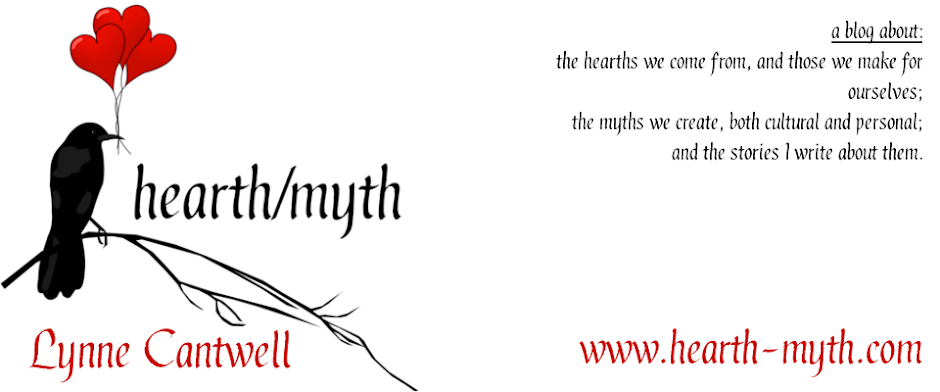 |
| Lynne Cantwell 2023 |
I thought you'd be glad to know that we're creeping up on one of these transition times. On Imbolc -- which some know as Candlemas and most know as Groundhog Day -- we'll be halfway from the winter solstice to the spring equinox. In other words, my friends, spring is on its way.
I attended an online class about Imbolc this week. The hosts asked the participants whether they'd seen any signs that spring is coming. Some folks talked about seeing plants beginning to green up. I don't know where those folks live, but it ain't here in Santa Fe -- my porch still looks like this photo that I took near sunset a few days ago.
That little tree is the fake birch tree I mentioned in October. It's supposed to be winter holiday decor, but I've been keeping it up longer and longer every year. Last year, I left it up on the porch through Imbolc -- and maybe even another week or so, through the end of the state legislature's annual session. Last year, we had a 30-day session. This year, we're doing a 60-day session (in New Mexico, the legislature alternates between 30- and 60-day sessions), and I may just leave the tree up until it's over on March 18th. That's just a couple of days before Ostara, a.k.a. the spring equinox, on March 20th.
Working the session is like living in liminal time for two solid months. Have I explained about this before? We work seven days a week, with slightly shorter hours on Saturdays and a half day off on Sundays. (Yes, it's legal. State legislatures are exempt from federal wage and hour laws -- I looked it up.) For me, it's a little like going into a trance the weekend before Martin Luther King Day and waking up when spring has sprung. There is not much time to buy groceries and clean out Tigs's litter box, let alone have a life. So a little twinkling beacon of hope to light the darkness isn't such a bad thing.
And lighting the darkness is appropriate for Imbolc, one of Paganism's fire festivals. As I've mentioned before, Brigid was a goddess long before the Catholic church appropriated her as a saint, and over the years since, goddess and saint have become conflated. On the grounds of the cathedral in Kildare in Ireland, you can visit the foundation of Brigid's fire temple, and just down the lane is Solas Bhríde, where the Brigidine sisters have kept St. Brigid's perpetual flame burning since 1993. I received a very warm welcome there when I visited Kildare several years ago. I recommend a stop, if you're ever in the area.
 |
| Lynne Cantwell 2016 |
This Imbolc is a big deal. It's the first time ever that St. Brigid's Day (in Irish: Lá Fhéile Bríde) will be observed as a national holiday in Ireland. The official day is February 1st, although the bank holiday will be Monday, February 6th (the Irish, like Americans, prefer to schedule their holidays near a weekend. Why not Friday the 3rd, then? Go ask the Irish government). According to the Solas Bhríde website, the centre will be hosting a bunch of events throughout the weekend, including a ramble on the Curragh.
What is the Curragh, you ask? Well, thereby hangs a tale.
Back in ancient times, the goddess Brigid (or maybe it was St. Brigid) petitioned the King of Leinster for a bit of land to build a monastery for herself and her followers. The king laughed and said no -- he needed all of his land for himself. Then Brigid made him an offer: what if he gave her just the land she could cover with her cloak? The king laughed again and agreed. And so Brigid and her followers set to unfurling her cloak -- which of course was magical (or miraculous, if you prefer). Before they were done, they'd covered 5,000 acres of pastureland near Kildare. The king realized he'd been had, but he stuck to his word. The Curragh belonged to Brigid.
Today, it's owned by the government of Ireland. There's a famous horse breeding facility and racecourse on the outskirts, and a military camp on the grounds. The big battle scene in the movie Braveheart was shot on the Curragh.
Anyway, here in America, there's no holiday for Brigid, so I will be working on Imbolc. But I'll keep my tree lit for her -- and I'll be grateful that we're halfway to spring.
***
These moments of magical blogginess have been brought to you, as a public service, by Lynne Cantwell. Hail, Brigid!

.jpg)





